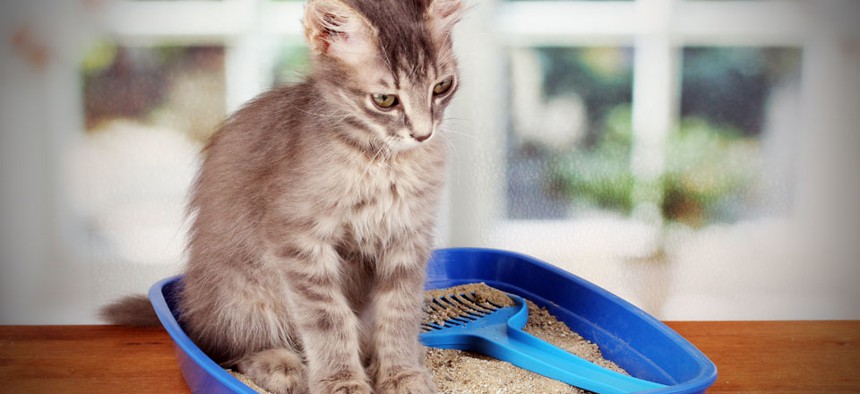Watchdog: Don’t Rule Out Organic Kitty Litter as Culprit in Nuclear Waste Radiation Leak

Africa Studio/Shutterstock.com
DOE IG says Los Alamos Lab did not assess chemical incompatibility problems.
Kitty litter may yet turn out to be the culprit behind a radiation leak at a nuclear waste site earlier this year.
An Energy Department inspector general report released yesterday raised once again the possibility that the addition of organic kitty litter to nuclear waste drums may well have led to a rupture of one drum at an underground storage facility and a subsequent radiation leak Feb. 14.
The report raises concerns about the safety of hundreds of other waste drums.
The New Mexico Environment Department’s Hazardous Waste Bureau theorized this May that a combination of organic cat litter and nitrate salt waste in nuclear waste drums at Los Alamos National Laboratory prior to shipment to the underground Waste Isolation Pilot Plant near Carlsbad, New Mexico, may have led to the drum rupture and the eventual radiation leak.
DOE debunked this hypothesis in June, saying Los Alamos and other research labs were unable to replicate that reaction in tests.
But the IG said in its new report on the potential impacts of the shutdown of the waste plant that while DOE investigations have not yet discovered the cause of the radiation leak, it “identified several weaknesses in LANL's procedures for the development and approval of waste packaging and remediation techniques that may have contributed to the radiological event.”
These weaknesses led to an environment that permitted the introduction of potentially incompatible materials to waste storage drums, the IG said.
“Although yet to be finally confirmed, this action may have led to an adverse chemical reaction within the drums resulting in serious safety implications,” the report stated.
The IG said Los Alamos National Security, LLC -- a partnership of the University of California, Bechtel, Babcock & Wilcox Technical Services and URS Energy and Construction -- which operates LANL and its subcontractor, Energy Solutions, added potentially incompatible materials such as organic kitty litter and liquid acid neutralizers to waste stored in drums during the waste remediation process at the lab.
The lab’s waste processing and safety-related control procedures should have prevented the addition of these potentially incompatible materials, the IG said.
Los Alamos did not follow its own procedures for processing waste when it came to the use of kitty litter in the 55-gallon waste drums, the IG said. Written policies as of May 2012 called for the use of a clay-based kitty litter and nowhere mentions the use of organic kitty litter made from plant material.
An unidentified Energy Solutions official in August 2012 told the IG the company received verbal authorization to use organic kitty litter processing of waste with nitrate salts.
Don Hancock, director of the nuclear waste safety program at the Southwest Research and Information Center, a nuclear watchdog group in Albuquerque, said the IG report clearly shows Los Alamos and the waste plant did not follow procedures which, if adhered to, could have helped prevent the radiation leak.
Los Alamos made a formal agreement with the New Mexico Environment Department in January 2012 to ship 3,706 cubic meters of nuclear waste to the waste plant by this June. Shipments to the plant stopped in February after the leak.
The IG reported that there are currently a total of 713 nitrate salt-bearing waste drums, with 508 located at plant, 86 at Los Alamos and 119 at a temporary commercial waste storage facility in Texas.
Due to the plant closure, a contract was executed with the temporary commercial waste facility to store waste from Los Alamos until the plant reopens -- at a cost of $5.1 million through the end of the 2014 fiscal year, which ended yesterday.
The IG recommended, and DOE management concurred, that Los Alamos management tighten up waste management procedures and insure strict adherence to those procedures,
Management of the waste program will also be transferred from the National Nuclear Security Administration to the DOE Office of Environmental Management, the IG reported.
(Image via Africa Studio/Shutterstock.com)
NEXT STORY: US Is Saving Nukes So It Can Blow Up Asteroids






